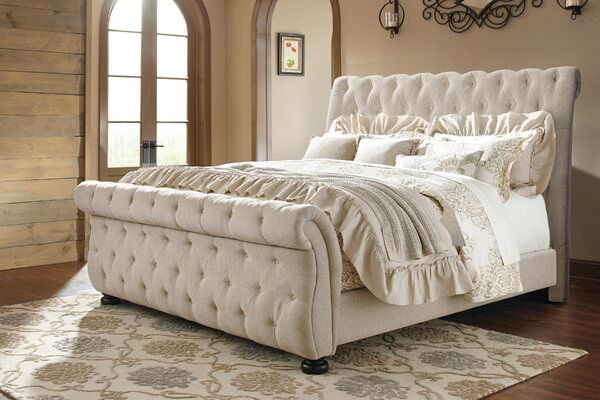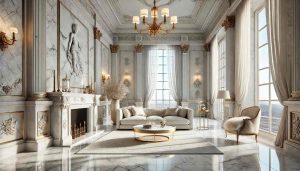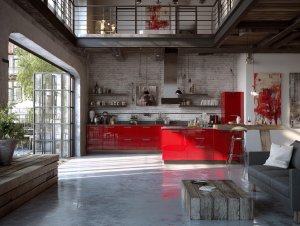Upholstered Bed vs. Wooden Frame: Which One Wins in 2025?

Choosing the right bed for your bedroom in 2025 isn’t just about aesthetics; it’s also about functionality, comfort, and longevity. With modern interiors evolving to balance comfort with style, two clear front-runners have emerged: the timeless wooden bed frame and the stylish, cosy upholstered bed. While both options come with their own sets of pros and cons, the final decision often boils down to your lifestyle, priorities, and the vibe you’re going for. Let’s break down the key factors to see which one comes out on top this year.
1. Aesthetic Appeal and Design Flexibility
Upholstered beds are undoubtedly the winners when it comes to plush elegance. They add texture, colour, and a feeling of warmth to a room. With options ranging from velvet, suede, and linen to faux leather, you can customise the entire look to fit your bedroom’s aesthetic. Button-tufted headboards, wingback designs, and even beds with built-in LED lighting are now common features.
Wooden frames, on the other hand, carry a classic, earthy appeal. They fit effortlessly into minimalist, Scandinavian, rustic, or traditional settings. Whether you prefer teak, oak, walnut, or mango wood, the natural grain patterns and finish offer a timeless charm. However, their design flexibility is slightly more limited compared to the fabric-based customisation upholstered beds allow.
Verdict: Upholstered beds win for customisation and variety, while wooden frames hold their own in timeless elegance.
2. Comfort and Daily Use
An upholstered bed offers a soft, padded surface, especially around the headboard. This makes lounging, reading, or watching TV in bed more comfortable. The fabric also provides a warmer touch during colder seasons, making your bedroom feel cosier.
Wooden beds, though sturdy, can feel cold or rigid. While you can add cushions or a headboard cover, it still doesn’t match the built-in comfort that upholstered beds provide.
Verdict: Upholstered beds take the lead here, especially for people who spend a lot of time in bed beyond sleeping.

3. Durability and Longevity
Wooden frames are built for durability. A solid wood bed, especially one made from hardwood like teak or oak, can last for decades with little maintenance. These beds resist sagging, bending, or loosening, making them a long-term investment.
Upholstered beds, on the other hand, depend on both their internal frame and the outer fabric. While some may use strong wood inside, the fabric exterior is more vulnerable to wear. Over time, you might notice pilling, fading, or visible stains, especially with lighter fabrics. Foam padding used for comfort can also lose its shape with regular use, making the bed look older faster.
So, while upholstered beds offer style and softness, they may not match the lifespan or toughness of a classic wooden frame. If longevity and minimal upkeep matter most to you, wooden frames still take the win in 2025.
Verdict: Wooden beds win hands down for durability and low maintenance.
4. Maintenance and Cleaning
Wooden frames are easier to clean. A quick wipe-down with a dry or damp cloth keeps them in good condition. They are also less likely to trap dust or allergens.
Upholstered beds, especially those made with fabric or suede, require regular vacuuming to avoid dust accumulation. Spills can stain the material, and over time, the fabric may start to look worn out without consistent care.
Verdict: Wooden frames are easier to maintain and more hygienic in the long run.
5. Storage Options
Upholstered beds often come with built-in storage, including drawers or hydraulic lift mechanisms. This is a huge advantage for urban homes where space is limited. The padded frame design easily accommodates hidden compartments without compromising on style.
Wooden beds also offer storage variants, though they tend to be bulkier and more traditional in design. Drawers in wooden frames may not glide as smoothly unless fitted with modern hardware.
Verdict: Upholstered beds win for their smart integration of modern storage features.
6. Budget and Pricing
Solid wood beds, especially those made from premium hardwood, can be expensive. However, they’re an investment in durability.
Upholstered beds have a wide pricing range. Budget options may use lower quality materials, leading to quicker wear and tear. Higher-end models with premium fabric and foam padding can cost as much or more than wooden beds.
Verdict: It’s a tie. Wooden beds offer long-term value, while upholstered beds provide flexible pricing depending on material quality.
7. Environmental Impact
Solid wood furniture, when sourced responsibly, can be more eco-friendly. It involves fewer synthetic components and often has a longer lifespan, reducing the need for replacements.
Upholstered beds may use synthetic fabrics, foams, and adhesives that have a larger carbon footprint. However, some brands are now offering eco-conscious fabric and recycled padding options.
Verdict: Wooden beds win for sustainability, provided the wood is ethically sourced.
8. Space and Room Size Considerations
Upholstered beds are generally bulkier due to padding and fabric wrapping. This can be a constraint in smaller bedrooms where space is at a premium.
Wooden frames are typically more compact and offer a cleaner silhouette, making them suitable for tighter rooms.
Verdict: Wooden beds are better suited for small bedrooms.
9. Resale Value
High-quality wooden beds tend to retain their value well over time, especially if made from durable hardwood and maintained properly. Classic wood designs remain in demand, and minor signs of ageing often add character rather than reduce worth.
In contrast, upholstered beds usually lose value more quickly. Fabric can fade, stain, or absorb odours, making second-hand pieces less appealing. Hygiene concerns also play a big role—many buyers hesitate to purchase used fabric-covered furniture.
So, if resale or long-term investment is a priority, a wooden bed may offer better returns compared to its upholstered counterpart.
Verdict: Wooden beds have better resale potential.
10. Trend Factor in 2025
Upholstered beds are at the forefront of 2025 design trends. With smart features like built-in charging ports, backlit headboards, and custom upholstery services, they’re redefining bedroom aesthetics.
Wooden beds, while not ‘trendy,’ continue to offer lasting appeal. They may not steal the spotlight but provide a grounding, timeless presence in any room.
Verdict: Upholstered beds win for trendiness; wooden beds stay relevant through classic charm.
Final Verdict: Which One Wins in 2025?
Both upholstered and wooden beds serve different needs. If you’re after comfort, modern style, and smart features, an upholstered bed is the smarter choice. It’s perfect for those who want their bedroom to be both a retreat and a statement.
But if durability, low maintenance, and classic design top your list, you can never go wrong with a solid wooden frame.
Your Ideal Pick in 2025?
- Go for an upholstered bed if:
- You value comfort and aesthetics
- You need built-in storage
- You want a bed that fits 2025 design trends
- Stick with a wooden frame if:
- You prefer long-term durability
- You need something low-maintenance
- You appreciate timeless, natural materials
Ultimately, the best bed is one that reflects your lifestyle. Choose smart and sleep well.





